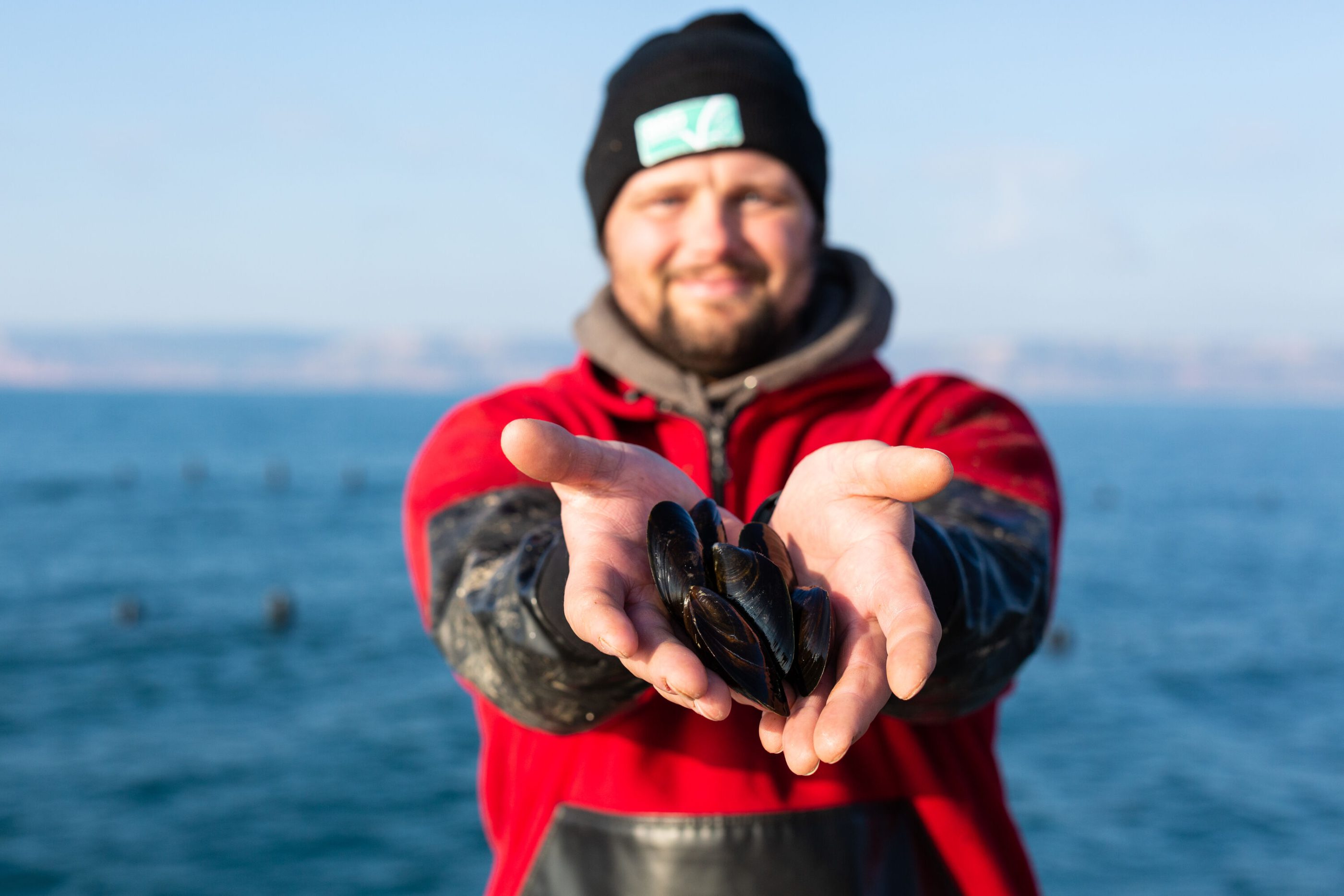
Learn more about seabass
Seabass is a very popular fish on restaurant menus and in home cooking. Its mildly sweet flavour makes it attractive to people who don’t care for strong smelling or tasting fish, and its high fat content and full, meaty texture, make it an excellent meal choice.
In the wild
Seabass in this context is the European bass (Dicentrarchus labrax). Seabass live most commonly in the open ocean, and are native to the waters off Europe’s western and southern coasts, and Africa’s northern coasts. They can also be found in shallow coastal waters and river mouths during the summer months.
Seabass are fished in the wild and farmed commercially, and are considered to be the most important fish currently grown in the Mediterranean.
Seabass, seabream and meagre are all perciforms, which are a type of bony fish, and they all have a lot in common with each other. As a result, these three species are covered by the same ASC standard and can often be substituted for each other in recipes.
Farming seabass
Seabass was one of the first types of fish to be farmed commercially in Europe and is now considered to be the most important commercially farmed fish in the Mediterranean. They were historically grown in coastal lagoons and tidal reservoirs using wild caught juveniles, before mass-production techniques were developed starting in the late 1960s.
The most important producer countries are Turkey and Greece, followed by Italy, Spain, Croatia, and Egypt, where seabass is grown intensively, mainly in net pens in coastal waters.
Farming of seabass was traditionally undertaken on a small scale in lagoons and based on the capture of small wild fish, but the industry now predominantly uses hatchery-reared juveniles.
World production of farmed seabass increased steadily from around 60,000 tonnes in 2003, to 235,537 tonnes in 2018, when it was valued at US$1.16 billion. Turkey and Greece together, represent around 69% of world production.
Impacts of farming seabass
ASC certified seabass farms minimise impacts on their local ecosystems through means such as the development and implementation of an impact assessment to protect key wild species and sensitive habitats in the proximity of the farm, protection of the ecological quality of the seabed, ensuring farms are not sited in High Conservation Value Areas (HCVA), and keeping fish escapes to an absolute minimum. Lethal action against predators/wildlife on the farm is prohibited, as is the use of submerged acoustic deterrent devices (ADDs).
Seabream is mostly farmed in Mediterranean regions, where the waters are home to several seagrass species. Seagrass meadows are vital ecosystems, providing food, shelter and nurseries for numerous species, so poorly sited or managed farms can impact on these important habitats. ASC certified seabass farms cannot be sited in protected areas or within 500 metres of seagrass meadows, and must conduct biodiversity impact assessments.
Feed
ASC certification requires seabass farms to adhere to strict limits to minimise the use of wild fish as an ingredient for feed. In addition, the standard requires farms to ensure full traceability back to a responsibly managed source, preferably certified, both for wild fish and other ingredients. Potential use of any GM/transgenic plant raw material in the feed must be documented.
Pollution
ASC certified seabass farmers are required to measure a number of water parameters such as phosphorus and dissolved oxygen levels at regular intervals, and ensure they remain within set limits. Copper release into the water must be minimised and monitored, and there must be evidence that biological and non-biological waste are either disposed of properly, appropriately stored or recycled.
Diseases
ASC certified seabass farms are required to adhere to rigorous requirements to minimise disease outbreaks. A Fish Health Management Plan detailing steps for biosecurity management must be developed under supervision of a veterinarian and implemented on the farm.
Social
ASC certification imposes strict requirements based on the core principles of the International Labour Organisation (ILO), which include prohibiting the use of child labour or any form of forced labour. All ASC certified farms are safe and equitable working environments, where employees earn a decent wage and have regulated working hours. ASC seabass farms must also consult with local communities to ensure that any complaints can be resolved.
Emissions
Whilst seabass have a relatively low carbon footprint compared to other forms of animal protein, all ASC farms must monitor the energy used to produce their fish, request information on their feed supplies, and record any greenhouse gas emissions, to ensure they are being environmentally responsible.
Eating seabass
Seabass has an attractive silvery skin with hard scales, which need to be removed before cooking. It also has spines and sharp gill covers, which should be removed. The flesh is a dull white, which turns bright white when cooked.
Seabass has grown in popularity as aquaculture production has increased, making this fish widely available at an affordable price. Seabass is suited for use in many different recipe dishes, and can be enjoyed grilled, pan-fried, steamed or poached. It can be easily substituted into any seabream recipe.
The mild flavour of seabass lends it well to a range of flavours, particularly the Mediterranean flavours from where it originates.



